FORT HOOD, Texas - When Soldiers are critically wounded on the battlefield, they often depend on medical evacuation or medevac, helicopters to get them to treatment as fast as possible.
In order to ensure Soldiers know what to do when they call for a medevac, the Soldiers of the 154th Transportation Company, 180th Transportation Battalion, 15th Sustainment Brigade, 13th Sustainment Command (Expeditionary), trained on the proper medevac procedures during Sergeant's Time Training Oct. 2.
The training, conducted by members of Company C, 2nd Battalion, 227th Aviation Regiment, 1st Air Cavalry Brigade, 1st Cavalry Division, covered everything from calling for a medevac to loading and unloading patients from the UH-60 Black Hawk helicopters, according to Staff Sgt. Christopher Orange, a flight medic and one of the instructors with the 227th.
Orange, a Sarasota, Fla., native, told the Soldiers some of the most common mistakes people make when calling for a medevac are providing the wrong location on the map or the wrong number of patients.
He explained they would rather have Soldiers overestimate the number of critically wounded than underestimate it.
Orange also talked to the Soldiers about the proper procedures to identify their location to the medevac crews using smoke, brightly colored panels and other techniques.
The training was important for the 154th Soldiers because once deployed, they will be going "outside the wire" daily, and it's important they know what to expect if they ever need to call for medevac, said Capt. Corinne McClellan, the company's commander.
"You don't want them to get this training when an event happens," McClellan said. "We're fortunate enough to have the individuals and training tools in place here to make sure that happens."
McClellan explained that it also builds cohesion and trust among team members, because each Soldier knows they can count on the Soldier next to them when they need to.
Sgt. Ramon Alcantara, a Boston native and driver, 154th, said the training was a real good experience that was very similar to the real-world events of a medevac.
Alcantara explained that he received similar training prior to his last deployment, and he has the experience of actually conducting a medevac during that deployment.
He said the training only lacked a few details, having a Soldier actually signal the helicopter as well as the stress and adrenaline of an actual combat situation.
Alcantara said his favorite part of the training was having the helicopters at the site, which allowed for the Soldiers to feel the physical strain of carrying one of their fellow Soldiers about 150 feet on a litter, into the wind of the turning helicopter and actually loading them into the aircraft.
McClellan said the unit has been conducting a lot of training in order to prepare the Soldiers for deployment, including practice rescuing Soldiers from disabled vehicles. The company is scheduled to deploy toward the end of the year.
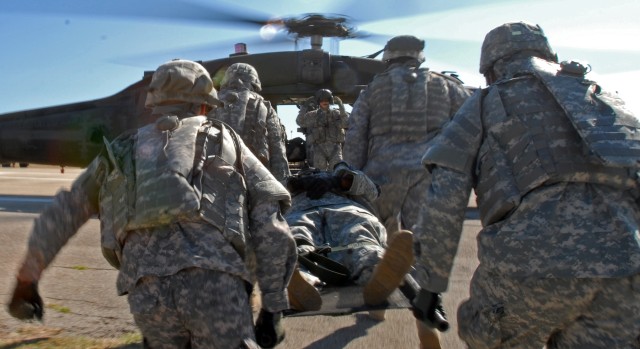
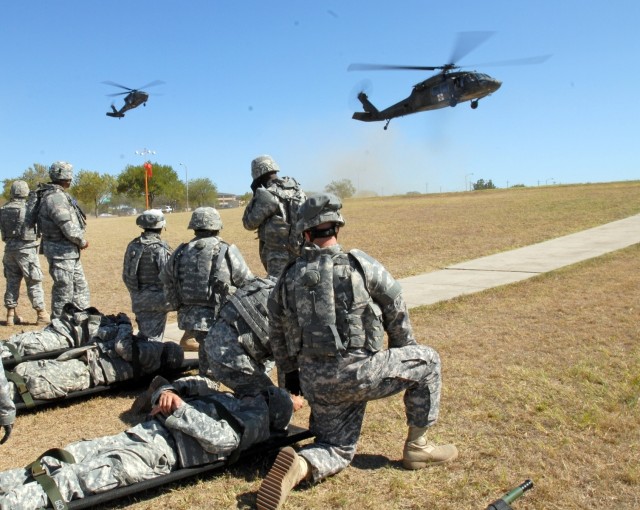
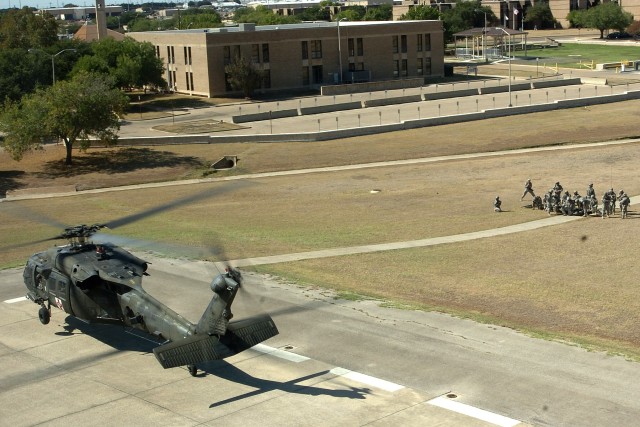
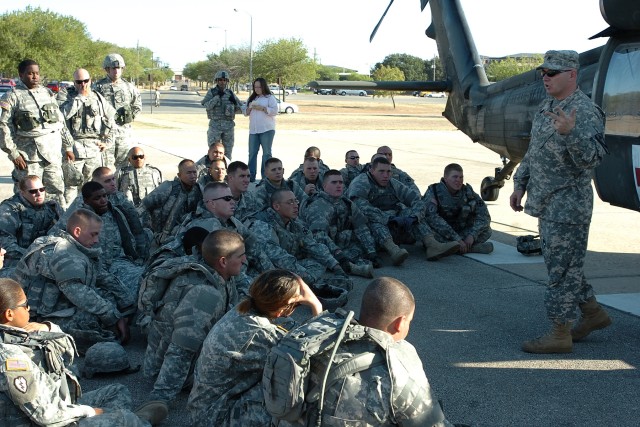
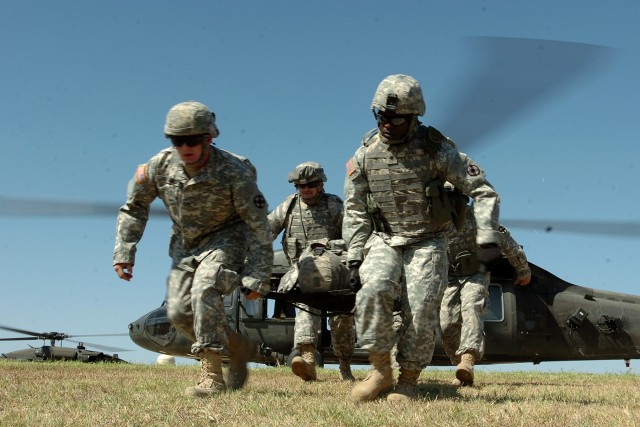
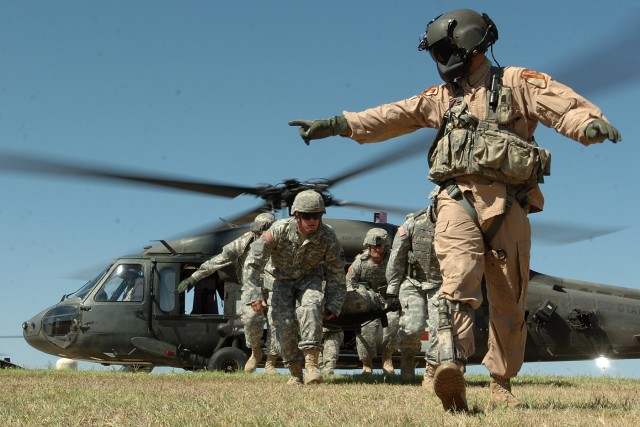
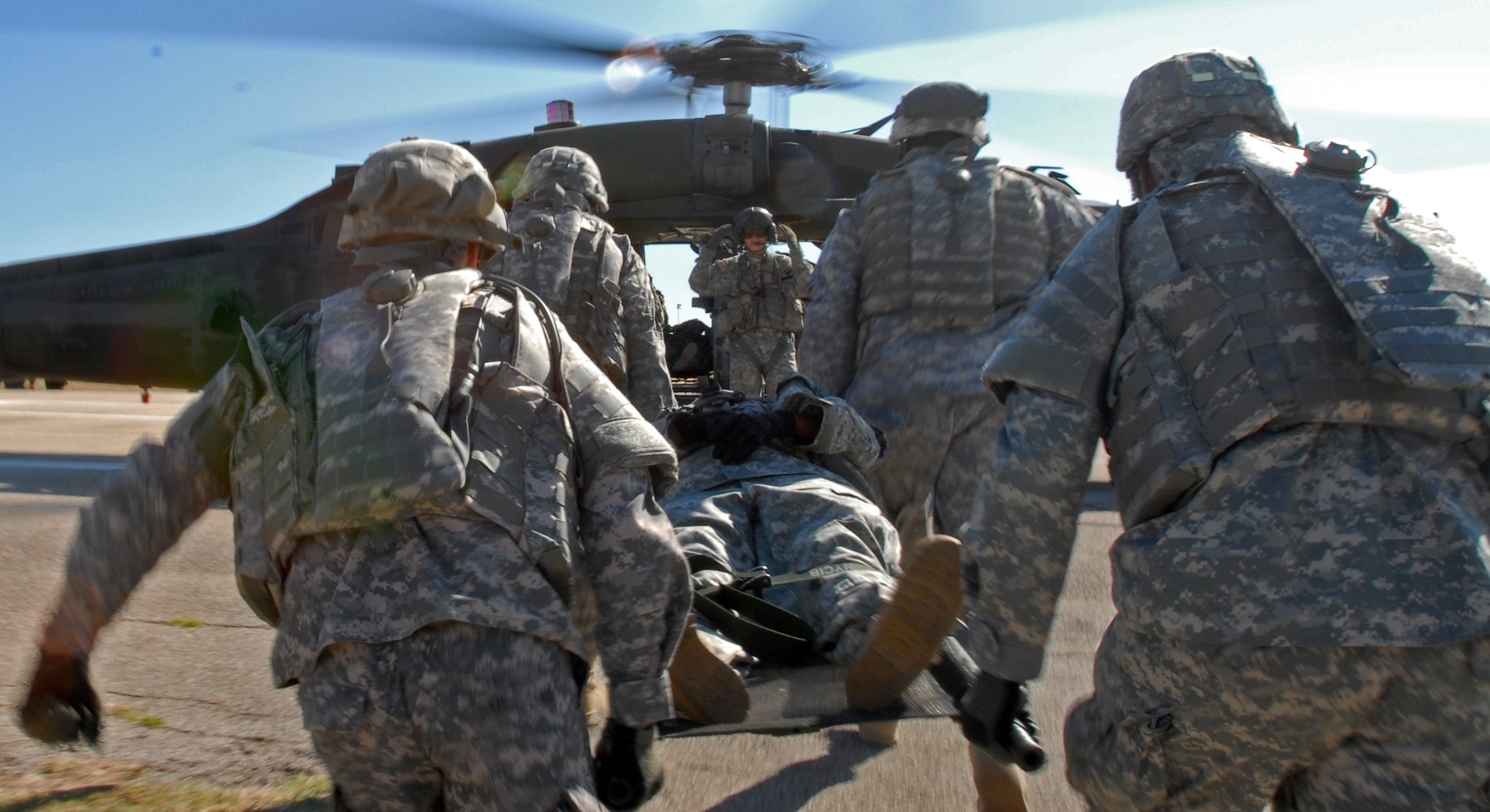
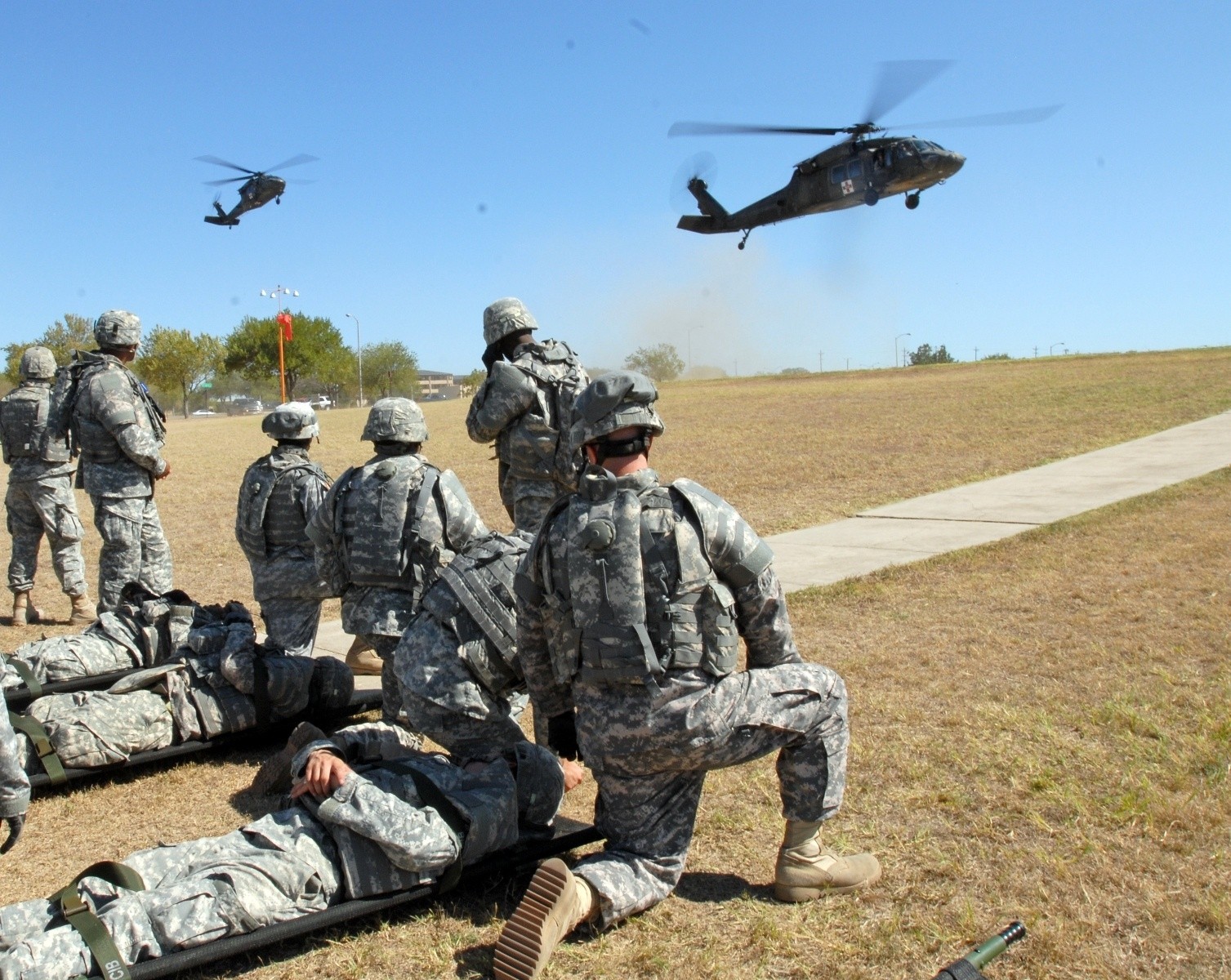
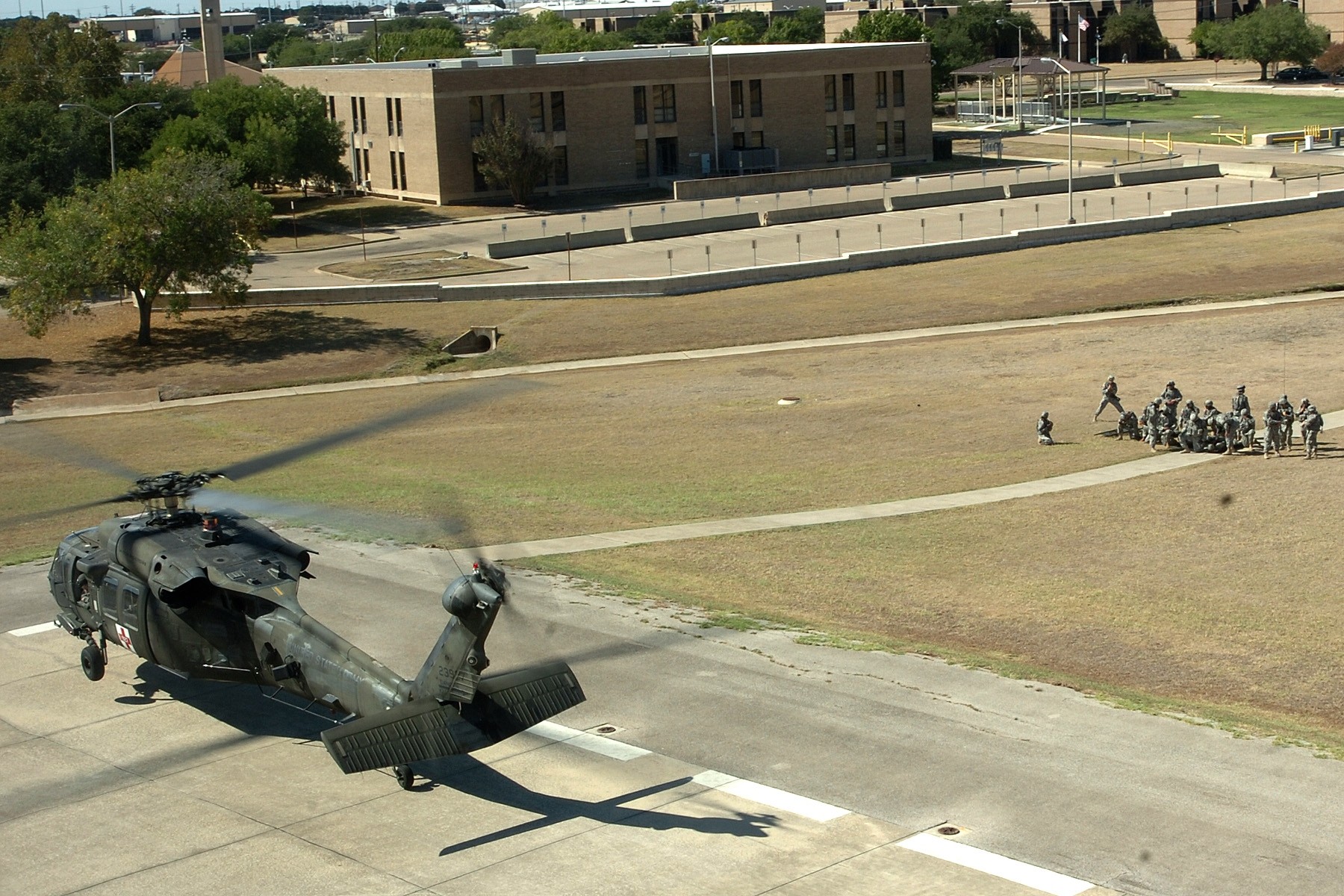
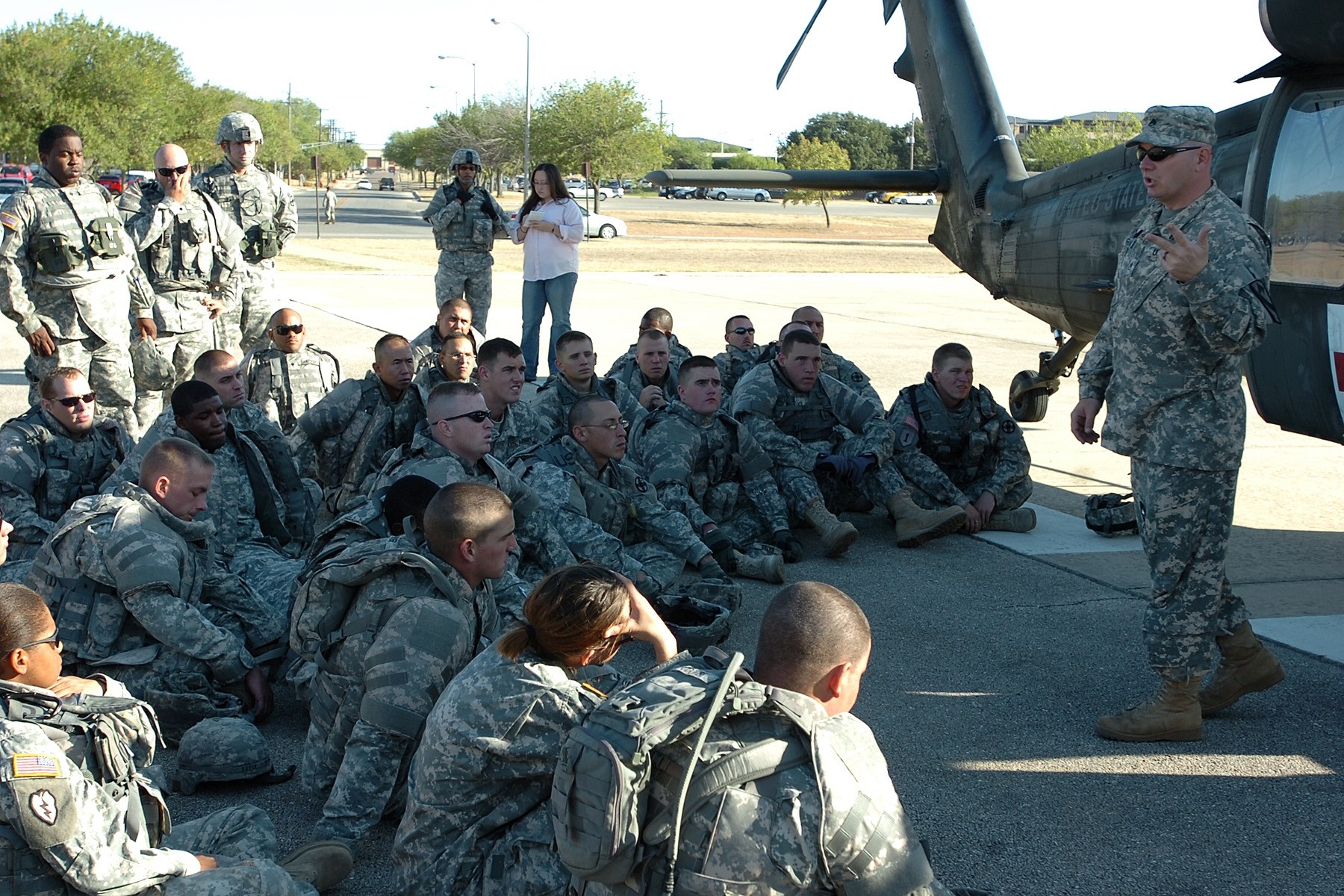
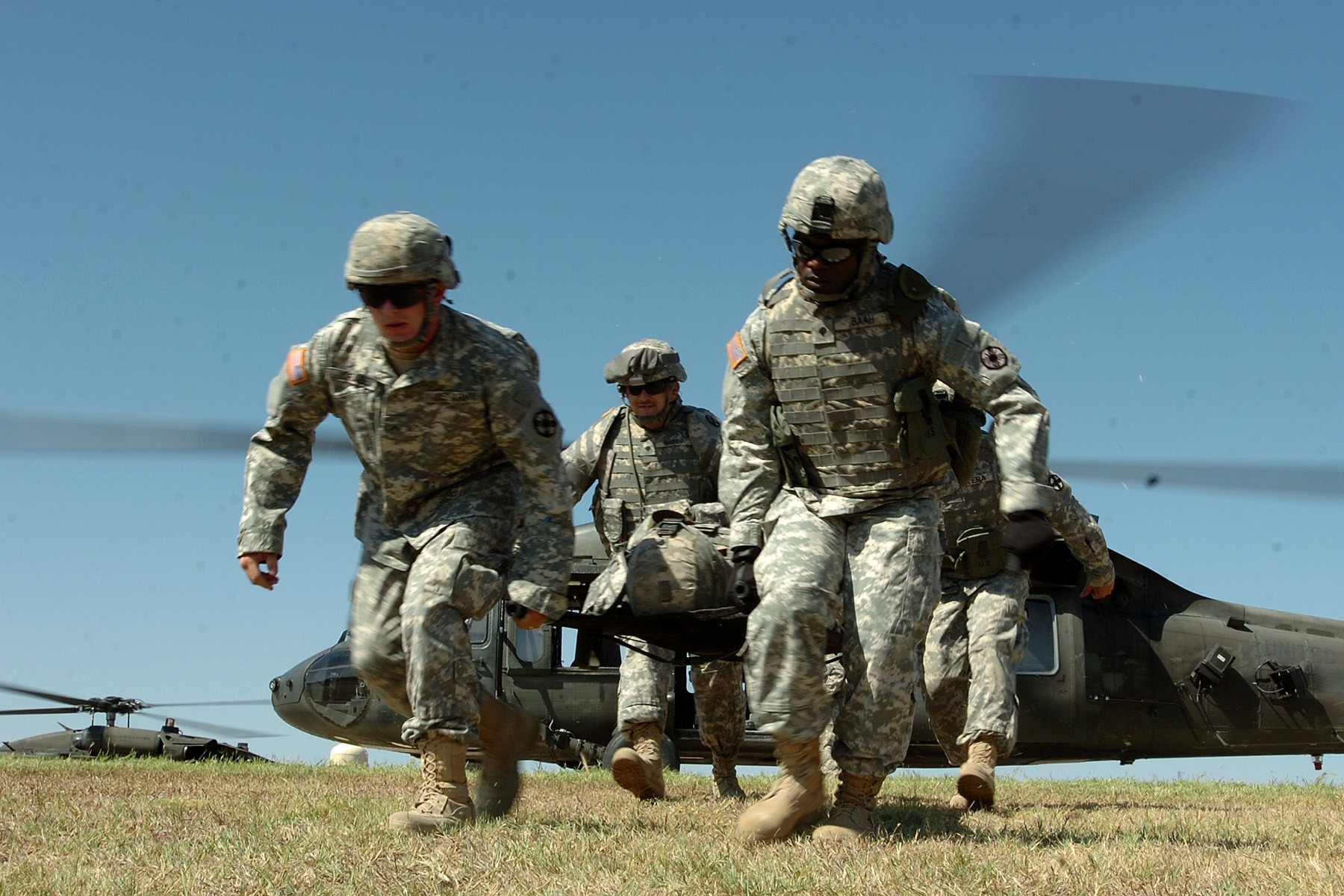
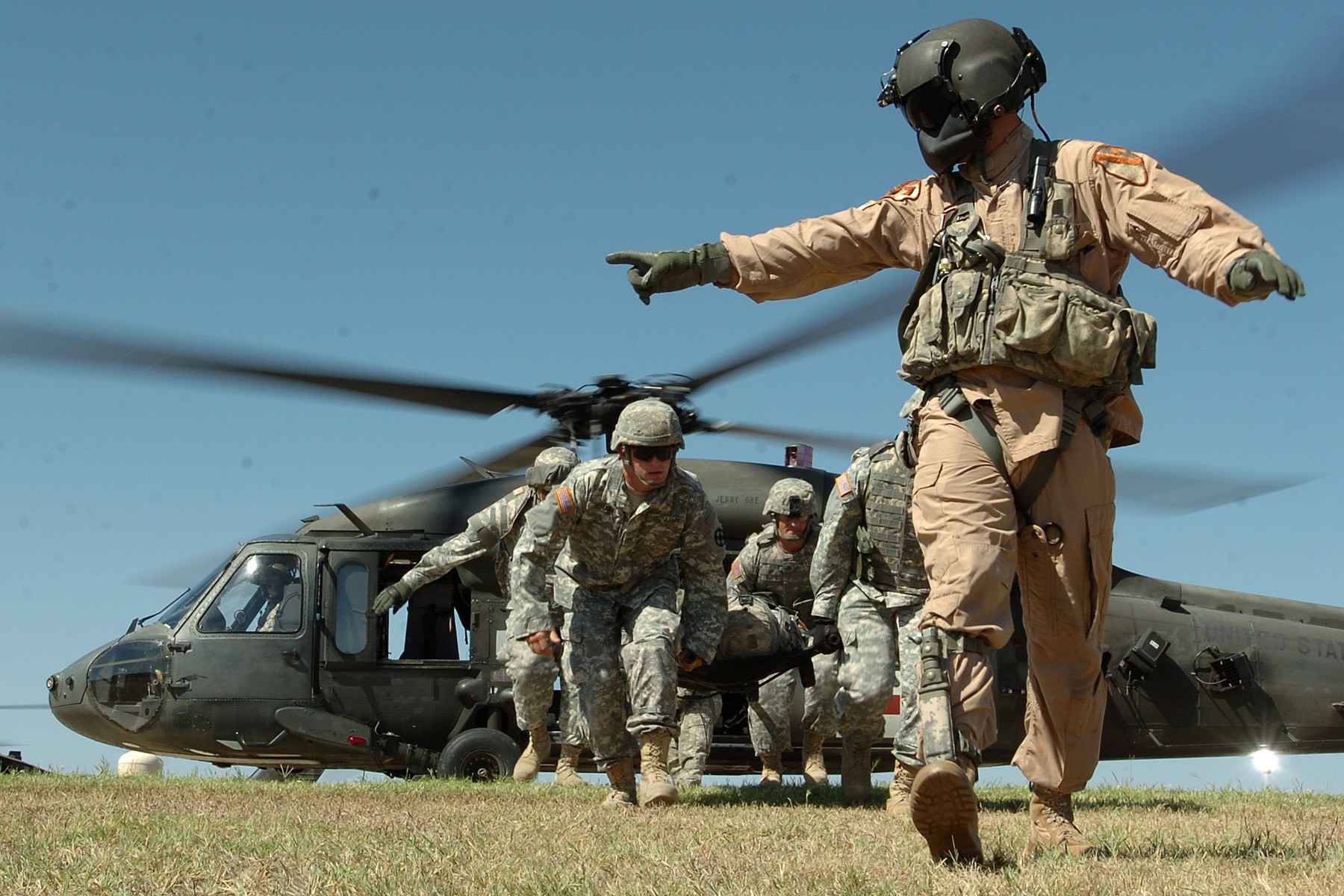
Social Sharing